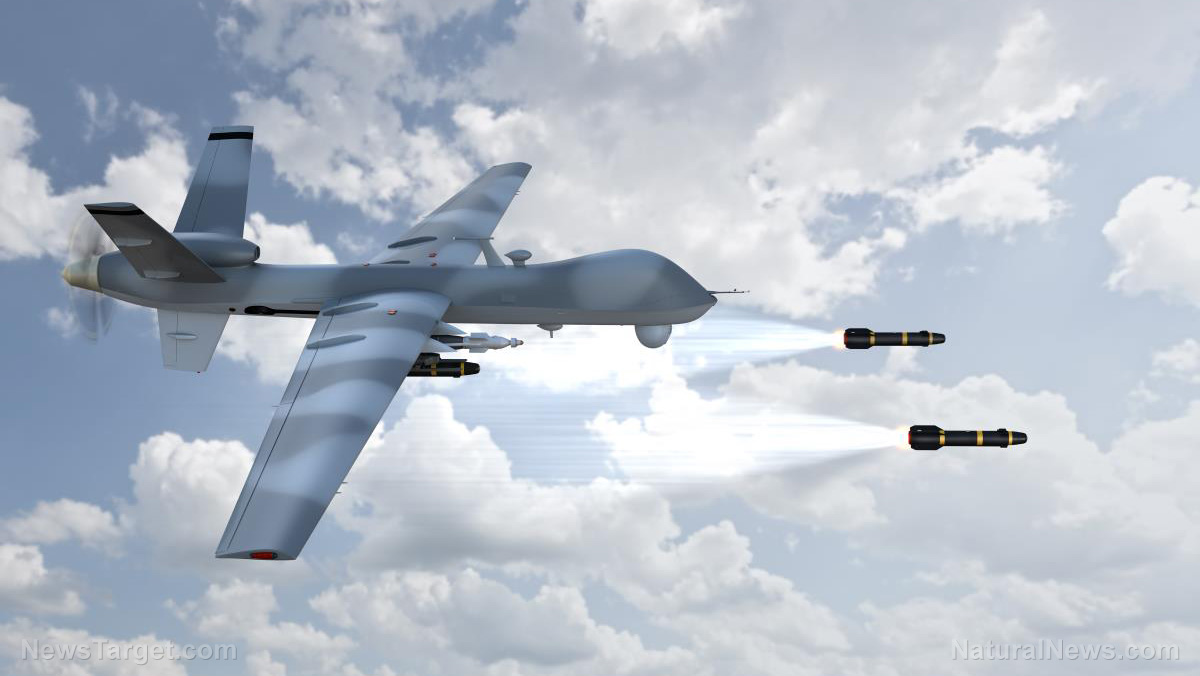U.S. completes installation of makeshift pier in Gaza; first load of humanitarian assistance moves ashore
05/22/2024 / By Belle Carter

The United States Central Command (CENTCOM) announced on May 17 that the first load of humanitarian assistance has begun coming through to the Gaza Strip via the temporary pier constructed by the U.S. military.
“Today at approximately 9:00 a.m. (Gaza time), trucks carrying humanitarian assistance began moving ashore via a temporary pier in Gaza. No U.S. troops went ashore in Gaza. This is an ongoing, multinational effort to deliver additional aid to Palestinian civilians in Gaza via a maritime corridor that is entirely humanitarian in nature, and will involve aid commodities donated by a number of countries and humanitarian organizations,” CENTCOM indicated in a press statement released on its website.
The efforts came in a few hours after Department of Defense Deputy Press Secretary Sabrina Singh said the makeshift pier system had been successfully installed, with the help of Israeli military counterparts, at a beach in the beleaguered enclave. Singh said the pier was successfully installed without the need for U.S. boots on the ground in the embattled territory. She told reporters at the press briefing that the aid would begin to flow through the pier system “as soon as the Commander feels that we are ready to go.”
President Joe Biden initially ordered the armed forces to build the pier in March, to facilitate increased deliveries of food and humanitarian supplies by sea. In April, U.S. military officials estimated the temporary humanitarian aid pier would reach initial operational capacity sometime in “early May.” However, the effort to build and anchor the pier was delayed over reports of poor weather. (Related: Biden: U.S. to build FLOATING PIER along Gaza coast to improve aid delivery.)
According to Singh, it would initially cost $320 million to begin operating the temporary pier. Costs could continue to rise as the U.S. military and U.S. and international partners continue to operate the makeshift humanitarian delivery route.
As the conflict between Israel and Palestine continues to escalate, access to food, water and other humanitarian supplies is disrupted. U.S. Agency for International Development Administrator Samantha Power testified at an April 10 House hearing that nearly the entire population of the strip “is living under the threat of famine.”
Power said around 500 commercial and humanitarian trucks would enter the Gaza Strip daily before Oct. 7 but the flow fell when the attacks started. She also said the number of these supply trucks reaching the Gaza Strip has recovered somewhat but that “we need to go way beyond that” to meet the humanitarian needs in the territory. “The destruction of greeneries and markets and arable land and then the fact that so few trucks got in over so many months means we have massive catch-up to do,” she added.
The United Nations Relief and Works Agency for Palestine Refugees (UNRWA) has reported some 5,671 aid trucks entered the Gaza Strip in April, for a daily average of 189 trucks. UNRWA estimates another 1,296 trucks arrived in the Gaza Strip between May 1 and May 15; a daily average of about 89 trucks.
Aid has been delivered but not unloaded
The first batch of humanitarian aid has been successfully delivered inside the Gazan territory but none of it has been unloaded from the temporary pier and delivered to the Palestinian people. Reports indicate that this is because several desperate Gazans intercepted trucks delivering aid from the pier over the weekend.
“I have doubts,” said Mounir Ayad, a Gaza resident. “I don’t understand this floating pier or what it indicates and what its purpose is. They say it’s for aid, but people are apprehensive. Is this aid or something else? We know that the U.S. has never supported the Palestinian cause, so it’s implausible that it is giving us aid without something in return.”
After this, the United Nations suspended the delivery operations until the logistical challenges were resolved. The U.S. is now working with the UN and Israel to identify alternate delivery routes for the safe delivery of hundreds of tons of aid transported to Gaza, Pentagon spokesperson Maj. Gen. Pat Ryder said.
More than 569 metric tons of humanitarian assistance had been delivered through the temporary pier, called Joint Logistics Over-the-Shore. The aid will be distributed by humanitarian partners, Ryder said.
Head over to Humanitarian.news for updates on the ongoing efforts to send in humanitarian assistance to the Gazan people.
Watch the video below where a local talks about the makeshift port set up off the Gazan coast.
This video is from the alltheworldsastage channel on Brighteon.com.
More related stories:
Construction of U.S. military floating pier off Gaza nearly complete.
EU official condemns surge in Israeli extremist attacks on humanitarian aid convoys bound for Gaza.
Sources include:
Submit a correction >>
Tagged Under:
aid delivery, big government, CENTCOM, chaos, Department of Defense, floating pier, Gaza Strip, Holy War, humanitarian aid, Israel, Israel-Palestine war, military, Palestine, progress, Sabrina Singh, supply chain, temporary pier, temporary port, World War III
This article may contain statements that reflect the opinion of the author
RECENT NEWS & ARTICLES
COPYRIGHT © 2017 WWIII NEWS




















